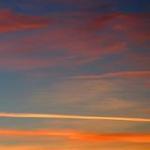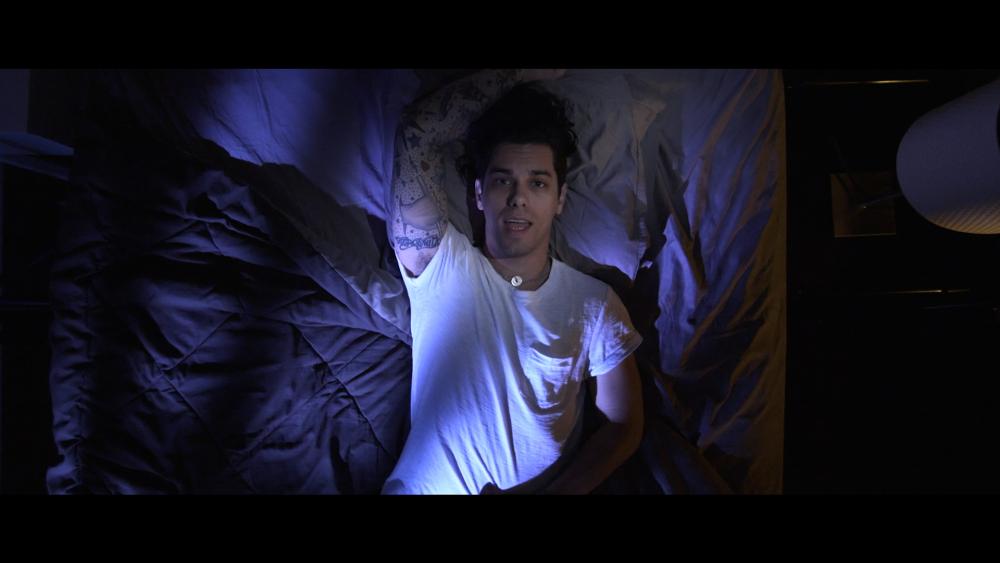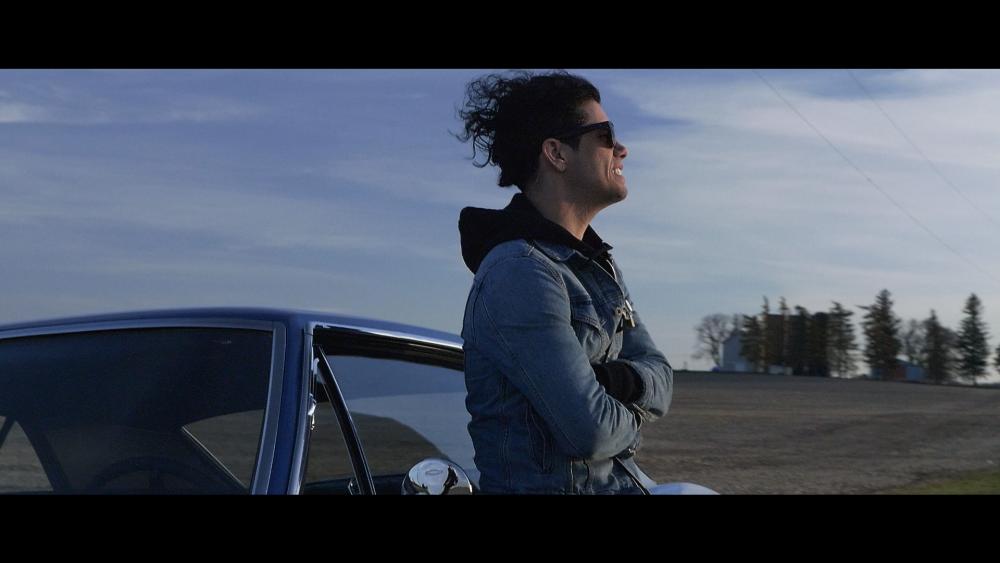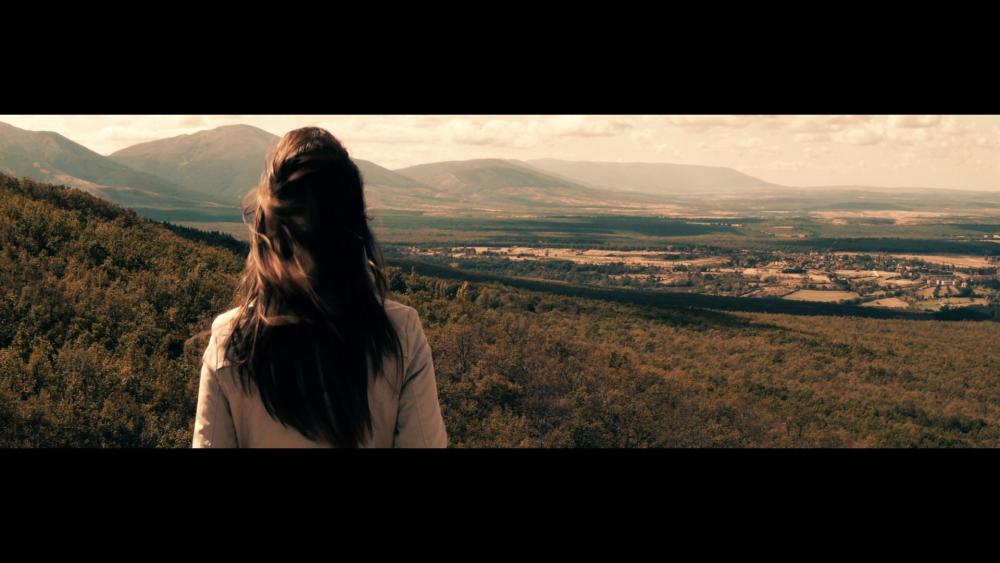Leaderboard
Popular Content
Showing content with the highest reputation on 11/17/2015 in all areas
-

Sony A7RII 4k versus NX1 4K
jacoblewis and 4 others reacted to Andrew Reid for a topic
It's more about the codec actually. H.265 effectively doubles your bitrate due to 2x greater efficiancy. 70 = 140Mbit/s The NX1's codec is able to hold onto more detail, where H.264 on the a7R II goes a bit muddy due to compression. The RX10 II's codec is muddier still, probably due to a cheaper processor. So in short... definitely more 'real' detail on the NX1 compared to the A7R II and A7S II.5 points -

Where is the V Log love?
TheRenaissanceMan and 2 others reacted to AaronChicago for a topic
3 points -
Sirui Monopod Review
webrunner5 reacted to mercer for a topic
One day last week I was reading a post about the Blackmagic Micro Cinema Camera, when I read a comment by @Zak Forsman regarding the Sirui video monopod. It was perfect timing because I was in the middle of searching for a good monopod. I had narrowed my choices down to a model by a company name Cinetree and a Manfrotto model. I had heard of Sirui but never read any reviews on it. Zak gave it a glowing recommendation, so I headed over to eBay to check it out. Luckily, I found a "New Other" model for sale at a 30% discount... Sold. The monopod arrived 2 or 3 days later and I was immediately impressed with the build quality and how lightweight it was. The fluid pan function is butter smooth and the tilting, swivel base is just as smooth as the panning. The built in foldable feet are sturdy. But when I extended the legs, the top and bottom section was tight, I could barely extend them. I figured that this is why it was sold as new other... it was probably a return. I, immediately, went over to Amazon and read some reviews and the tight leg seems to be a common flaw of this unit. Apparently, when the sections of the leg are extended with a lot of force, the female metal end digs into the male plastic guide cap and scrapes off shavings of plastic, the leg gets clogged and it becomes very tight to open and close. Some buyers received their monopod that way, others had the issue occur over time and others never had a problem at all. I had two options, pack it up and return it, or take it apart and fix it. Since every other aspect of the monopod: the price, the fluid pan, the swivel, tilting base and oversized feet were exactly what I've been looking for, I chose the latter... take it apart and clean it. In less than 10 minutes, I had the monopod sections apart, cleaned, relubricated, with WD-40, and reassembled. It works just as new. Perfect. I attached a video of some clips I took yesterday down the shore. After about a half dozen cups of coffee and a half a pack of cigarettes... I realized I need a little more practice with it... or less vices that cause uncontrollable arm spasms. But either way, I am extremely happy with it and it is worth every penny I paid for it. Does it replace a tripod with a good fluid head or a steadicam? No. But for run and gun shooting with a small footprint, it's exactly what I was looking for.1 point -
1 point
-
Cool. I have the Benro monopod that is shown in your youtube video. I'm pretty happy about it. The only flaw is that the backplate is quite tricky to fasten properly together with a Nikon D800. The tightening screw jams into the camera body and it doesn't get properly tightened. But it's still great for traveling around light while getting nice stable footage.1 point
-
Imagine if they could hack the camera and achieve a more "raw" video quality. We could get a similar quality at 6400 like you did instead of that 1600 usable limit.1 point
-

Best picture profile for GH4?
Daniel Acuña reacted to Cinegain for a topic
V-LOG so far showed best skintones though. With well lit skin that is. You wouldn't really want to use it in lowlight though and doesn't make much sense to use on gloomy days either. So more of a specific than standard go-to profile. Always felt like Natural and dialing everything down quite a bit (just saturation not that much) looked great. But maybe you're a supertone person. 'Best settings' is something quite subjective. Depends on the scene, what you're willing to sacrifice to get a certain something and what look you're going for/like. I'm afraid there isn't really an universal setting. Best to try a couple of popular recommended profiles and find what works for you.1 point -
That will be hard to decide... LX100 advantages: -15 min rec limit over 5 min in 4K - Cheaper - Can attach filters (43mm) without magfilter adapter - Battery life is much better on LX RX100 advantages: - Great 1080p with high fps (LX100: 50fps, line skipped with moire and aliasing) - SLOG2, and great high iso performance in video mode - very small, pocketable - build in flash which is very effective (and smaller than the LX100's attached flash) - flipable LCD Go for a used LX100 + a gimbal for the price of the RX100 Anyway i recorded this video with the LX100 and a Benro Monopod:1 point
-

Best picture profile for GH4?
Mat Mayer reacted to Lintelfilm for a topic
Cine V with sharpness and contrast all the way down and highlight curve at -5. You need mid tones for skin tone contrast so Cine D and V Log are no good. If you have a diffusion filter like Tiffen HDVFX or Ultra Contrast use it. Makes faces look much nicer in 4K.1 point -
I think it on topic because dishe seems to be going through, what boils down to me, MFT of APS-C. I've never had any interest in 4K as 4K. As I mentioned, 4K is now 'real' 1080. The A7S, with it's larger pixels REALLY confuses things because its fantastic saturated and moire-less image is very appealing. A problem I have with the LX100 is at 70mm it really isn't long enough to shoot over-the-shoulder shots (which I imagine you'll want too). It seems to me, two G7s with the 14-140mm would be a good approach. One can get two of those, with lenses for $2,000. It would cost $6,000 for similar A7S setups. The problem with dishe's goal, which I'm sure he understands all to well, it that it gets expensive. IMHO you should have double the camera bodies expense in lenses and the same amount in lights. So a $1,000 body should end up as $1,000+$2,000+$2,000 = $5,000. Yes, shooting out of my a__ here. But what I remind myself! I loved the colors you got out of the NX. It handled the clouds very nicely.1 point
-
Hi, At this time just I see everything in CinemaScope. Would like to share some of my test and evolutions: With 550D and hypergonar 4 years ago: Bolex 16mm Kodak Vision 2 with the front part of a Lomo square front,3 years ago: Blackmagic Pocket with front part of Lomo square front:1 point
-
You're right, my experience is with the A7, NOT the A7S, and you're right the less megapixel count of the A7S should allow it to run longer. Sounds like others haven't had a problem with shoot length, so I'm simply wrong I have both Panny and Sony. I'm also trying to chose between them. I currently have an A7, A6000, LX100, G6, GM1, BMPCC (I've owned a GH4 but sold it, though might not have if I didn't get into that bullshit "Log" craze which was more harm than good in what I was doing). Anyway, the big picture is Sony has more saturated colors and (less noise), shallower DOF and better autofocus than the Pannys. The Pannys are sharper, smaller, easier to use and have better remote apps. For stills I love the Sonys and have never been able to embrace MFT. For video, Pannys are small, idiot-proof and have never let me down. Anyway, I'm trying to decide between the A6000 and G7. I believe these are the best bang-for-the-buck cameras going. I can afford the A7RII or A7S, but feel the extra money would be better spent on lighting or audio equipment. With the A6000 I'll get best autofocus (the thing is amazing), rich colors and shallow DOF. However, the G7's 4K downscaled to 1080 will give me perfect 1080 really (whereas the A6000 is still more like effective 720). When I look at the LX100 compared to the A6000 they are both super great cameras with different strengths. Right now I'm leaning towards the LX100 because the image is so sharp and clean (even though in photography I'm more of a color/dof guy). Here's a video where I use some of these cameras https://vimeo.com/1458719441 point
-
Lenses
Cinegain reacted to BrorSvensson for a topic
http://www.sonyalpharumors.com/slr-magic-announces-the-new-cine-50mm-f1-1-fe-lens/ Im really really excited for this lens! A cine 50mm T(!) 1.1 for 350 bucks.1 point -
1 point
-
Lenses
Mattias Burling reacted to mercer for a topic
That is some Frankenrig you have there. I think the shots looks really organic. Good stuff! Look forward to seeing some exteriors.1 point -

First short profile: Constructive criticisms appreciated.
Zach Ashcraft reacted to Ty Harper for a topic
Hey all, Just shot/edited my first piece. I'm coming from a radio producer/documentarian background and have produced some stuff for television, but this is the first thing I've shot and edited myself. It was done strictly as a learning exercise. I've dabbling in video in my spare time (which has been scarce and so painstakingly slow) for about 5 years now and have learned a lot on these boards. I definitely appreciate the information and experiences shared here and would greatly appreciate any constructive criticisms and advice. Password: Malvern I did basic color correction as I'm just beginning to learn how to grade, and honestly thought it looked decent until it got uploaded to vimeo. So any vimeo tips would be appreciated as well. Here's a run down of the stuff I used: Camera: 5D MKII (ML Raw) Lens: Canon 28mm F/2.8, Canon 100mm F/2.8 L, Canon 80-200mm F/2.8 L Audio: Sennheiser G3, Marantz PMD661 Lights: F&V R-300, Lowel Rifa Ex-88 Conversion: MLVMystic Edit/Basic Color Correction: Da Vinci Resolve 11 Lite Export: ProRes 422 HQ (resized to HD 1920x1080) Password: Malvern <iframe src="https://player.vimeo.com/video/145473746" width="500" height="281" frameborder="0" webkitallowfullscreen mozallowfullscreen allowfullscreen></iframe> <p><a href="https://vimeo.com/145473746">People I Know - Kevin Jones (No Grade)</a> from <a href="https://vimeo.com/tyharper">Ty Harper</a> on <a href="https://vimeo.com">Vimeo</a>.</p>1 point -

Where is the V Log love?
JazzBox reacted to AaronChicago for a topic
Thanks. I prefer the image of the Sigma but the 12-35 is outstanding in my opinion. Especially b/c of the image stabilization. If you're going handheld it's a great tool to have. Locked off or tracking shots I usually use the Sigma.1 point -

Where is the V Log love?
JazzBox reacted to AaronChicago for a topic
I normally use the Panasonic 12-35, or attach a Speedbooster and use the Sigma 18-35, Rokinon 50 & 85mm.1 point -
Lenses
mercer reacted to Mattias Burling for a topic
You can control the aperture if its a Nikon mounted lens. They all have the aperture leaver underneath that the adapter can acess. Any who, speaking of Nikon and adapters, tonight is experiment night.... Quick test, bit soft of course. But dreamy1 point -
Shot by Lumix LX100. Light travel tripod. Gimbal Beholder MS1.1 point
-
1 point
-
A well-calibrated Bolex Moeller 16/32 1.5x is probably the sharpest and easiest to use dual focus anamorphic. It's lightweight and has excellent close focus. When you use it with a sensor capturing in HD aspect ratio (1.78:1) it becomes a 2.65:1 -- essentially an original cinemascope recording format which with a 10% crop becomes standard 2.39:1 anamorphic projection. I ran some extensive tests on the 16/32 including maximum barrel distortion (important because excessive distortion leads to anamorphic "mumps") and determining minimum taking lens focal length. The setup was a GH4 in UHD mode with an MD to micro 4/3 speed booster so effectively it was close to a S35 sensor size. The minimum focal length without vignetting was an MC Rokkor 35mm f1.8. It looked great. The wider you go the more you tend to reveal distortion at the edges of the Bolex, but I compared the barrel distortion to the same distortion on super high-end Hawk and Panavision 35mm and it was nearly equivalent. I used the MC Rokkors because (1) the 58mm f1.2 is legendary and I've use it to great effect, (2) the MCs have a good single coating so it doesn't kill anamorphic flare and (3) there's a speed booster for it. You can also easily adapt M42 mount lenses to MD using an inexpensive Fotodiox adapter. That opens the MD booster up to some great anamorphic M42 taking lenses like the Jupiter 85, the Helios 44-2 and the Zeiss Jena Flektogon 35mm f2.4. (I used to avoid M42 taking lenses because they're screw mount and you don't want them unscrewing when you adjust focus etc.) Of course the speed booster drops all lenses down a stop so the 58mm becomes a f0.8. Other good choices are the Canon FD taking lenses, but (a) there is no speed booster for FD and you can't use the EF speed booster without an additional optical adapter. BTW: I did test the Rokkor MC.W 28mm as a taking lens and while it works it starts to vignette on the horizontal, but that might disappear during a crop to 2.39:1. In any case 28mm anamorphic starts looking unnatural to my eye, but might be useful for special shots. A few negatives on the Bolex: (a) They're relatively rare and damn good so they're kind of expensive: cheaper than the high-end Iscos, more expensive than the Bell and Howell's and Kowas I think. I expect that because of the new Rangefinder, the Bolex will stay high in price as the Iscos drop. Expect to pay in the $1500 - $2000 range. (b) Adapting them usually requires an adapter from RedStan if you want to do it professionally. There are some hacks floating around that will still make it work if you can't find a RedStan. One final recommendation: Whichever adapter you go with make sure to send it to Bernie O'Shaunessy for cleaning and calibration. Most of these lenses are 40 - 50 years old. You don't want to drop a grand or so on an adapter only to deal with something out of calibration. His labor rates are pretty reasonable. Good luck. Here's a sample frame from a Bolex 16/32 by Mauri Galliano, a great Spanish DP who has used Bolexes to excellent effect. (The model is his sister).1 point
-
Nicely crafted. Loved everything except the title design (size, font, legibility and color).1 point
-
Looks great, love the colors. I also liked the way you did the voice-over and focus. The music didn't quite work for me though. Also, I'm not sure about your goal, but if you wanted to use this as a bio/promo video, perhaps you should add (even begin with) your best pictures, we don't see much of your work. Overall, great job.1 point
-
Blackmagic Video Assist Review
IronFilm reacted to Bkn Soc of Cinematography for a topic
I just finished a feature in which we used the Pix E5 extensively. For our main cams we had Fs7's with Speedboosters. But we wanted to use a Steadicam Tango which has a weight limit of 5 lbs. So we paired an A7s at the end of the Tango and Pix E5 as the operator's monitor. In short, the Pix E5 is bullet proof. In prep we tested Shoguns but found them too fiddly and power hungry. With the E5 we'd get a couple hours use with (2) NP 970 batteries. Also, their media system is well thought out. Pop out drive, stick it in computer, no intermediate interface. Also, noteworthy, it's at least a stop brighter than the Shogun which helped for brightly lit locations. The downside, no 60p. The interface is pretty simple. Buttons and touch screen. As a reference monitor, it'll take LUTs, display Histo, Waveform, Vectorscope, etc. I bet it becomes a standard "director's" monitor on movie and TV sets as they'll be able to review and que takes without having to summon the VTR guy and do it privately without everyone else watching. The union is going to hate this one.1 point -

Blackmagic Video Assist Review
zetty reacted to Clayton Moore for a topic
I actually got my hands on one of these and an URSA Mini not long ago and knew right away how BMD has the potential, if they stay focused, to push the competition very hard in (affordable by the masses) digital cinema in the next 36 months. Its not always how well developed a product is at release, but how it effects the market and this release is actually petty important in that way because it puts the competition on notice to stay competitive or loose out.1 point -
1 point
-

Blackmagic Video Assist Review
IronFilm reacted to Don Kotlos for a topic
But that is actually an advantage of the Blade. You can get faster SSDs with larger capacity much much cheaper than SDXC. For example a 128gb Sandisk Extreme Pro is $100. A 120gb SSD is less than $50 ...1 point -

Blackmagic Video Assist Review
IronFilm reacted to TheRenaissanceMan for a topic
But it offers waveform, peaking, false color, zebras, histogam, punch in, and record triggering. None of which the Video Assist offers. I'd take that over 60p any day.1 point -

Blackmagic Video Assist Review
IronFilm reacted to TheRenaissanceMan for a topic
Then the Ninja Blade offers way more functionality for the same price.1 point -
Top notch! Looking so organic and great edit. Makes you wonder why recent cameras don't look any better.1 point
-
The old trust worthy forum
IronFilm reacted to craigbuckley for a topic
This forum has been very good to me in the past few years. I appreciate everything very much ... To be able to continue to shoot video and make movies with your help.. I do have a problem right now regarding my GH2s... I shot an event recently that required 2 hours of non stop recording on both of my hacked Gh2's (Flowmotion hacks on both). I use two 64 GB SanDisk Extreme PRO 95 SD Cards with this hack. I shot the event on tripods and everything went smoothly, both cameras recorded a couple hour takes and everything seemed fine. I then got home and put in my SD card into my macbook and opened up FCPX and only 3 files showed up- the last few clips of the event... I didn't panic because I have had this happen before so I knew to look under my private folder and then AVCHD > BDMV> STREAM to find .mts files that were my footage.. I then converted them but still lost some footage from the whole mess.. Why does this happen? The hack has been working fine other than this but with this long event shoot, I figured its why my SD card acted funny. It happened on both cameras and it seemed to have happened when I changed batteries during the shoot. Is there a new hack you recommend? I know the gh2 is old news but are there any new hacks or solid ones? Thanks again for all the help. This old community.1 point -

Sony vs Canon colour science - does this explain the difference?
SRV1981 reacted to theSUBVERSIVE for a topic
From a presentation I watched from Alister Chapman I got to understand - not fully - a few things about colour science, logs, sensor, etc. with my own take on it since he wasn't talking about this specifically. He basically explained the differences between broadcast standard, how to use the extra stops you get in these cameras and how log works. I think that the sensor itself is less important to the discussion because that's just a workspace, two manufacturers or more can use the same sensor and have very different results in the end. Colour science does matter, I can't agree with those that say like "it doesn't, you just have to grade better", that makes zero sense. Actually in the presentation Chapman said something similar to Andrew's theory, Sony is an engineer company and they make it so you can get the most color gamut possible, therefore, they get more green as well, which not necessarity means it will make better images. But that's just one step, the other one is how you use it. He also talked about how the green end up shifting to fit the workable color gamut and he even explained the difference between S-log 2 and S-log 3 in more details and why S-log 2 is more complicated to grade or why you record S-log exposing to the right, about 60% zebra. When you create a log or a picture profile, cine gamma, etc. that's when you start to use the information you have from the sensor and in this case, simply showing all the color gamut is not really the best option and that's when colour science comes. I don't know if I would use the word artistic here, but more like perception, so making the data you get into something that looks more natural to our perception does make a lot of difference, even more because during color grading you will be doing something similar. But let's say that after the data you get, you make something unbalanced because you wanted to show all the color gamut possible, then it will be much harder to get a more natural look since you will be getting more green and depending on several factors like color space, compression, etc. you might not be able to get what you would had you created a more balanced log with a better colour science. So basically with a better colour science you make a better use of the data you can get from the sensor, it doesn't necessarily mean showing more colors or even scientifically accurate colors. Of course that also means it's subjective as well and there is no a right and worng exactly, but overall, when the difference is notable you can say that one colour science is indeed better than the other and when it's closer, then it becomes more of a personal preference. That's probably also why you have a big difference between measurements of stops, color gamut, etc. and practical, real life aplication because measurements don't really tell how you use it and that's also why those DxO ratings don't mean one camera is better than the other. - As for why the S-log 2 is harder to grade, in simpler words it's something like it's more curved than S-log 3. When you grade usually you will do it based on that middle and the S-log 3 from that part and above is more like a line and less like a curve, so when you grade it up or down, it's more uniform. With the S-log 2 you have to basically grade the shadows, middle and highlights separedly because if you do based on any of these 3 parts, the value you add or substract will be different in the other section, so it's not uniform. That also matches the info I got watching a Sony guys talking about S-log 2 S-log 3. He said that S-log 3 is easier to grade and that S-log 2 is better for highlights while S-log 3 is better for shadows and if you look at the curves you can understand why, S-log 2 has more values for highlights while the S-log 3 has more values for shadows and mid tones. I think that "better" is not really the word, it's more like more nuances. Chapman also talked that in 8-bit codecs if you really want more information, you better off with S-log 2, if you want something easier to grade you can go to the others gamma curves. He explained why in low light you DON'T USE S-log at all, which totally makes sense, unless you are at night but filming a lot of light, recording in S-log will only make it noisier because although you will be getting more data overall, in the areas that matter it's the opposite, making is much noisier and that's also why S-log is no good for chromakey as well.1 point








